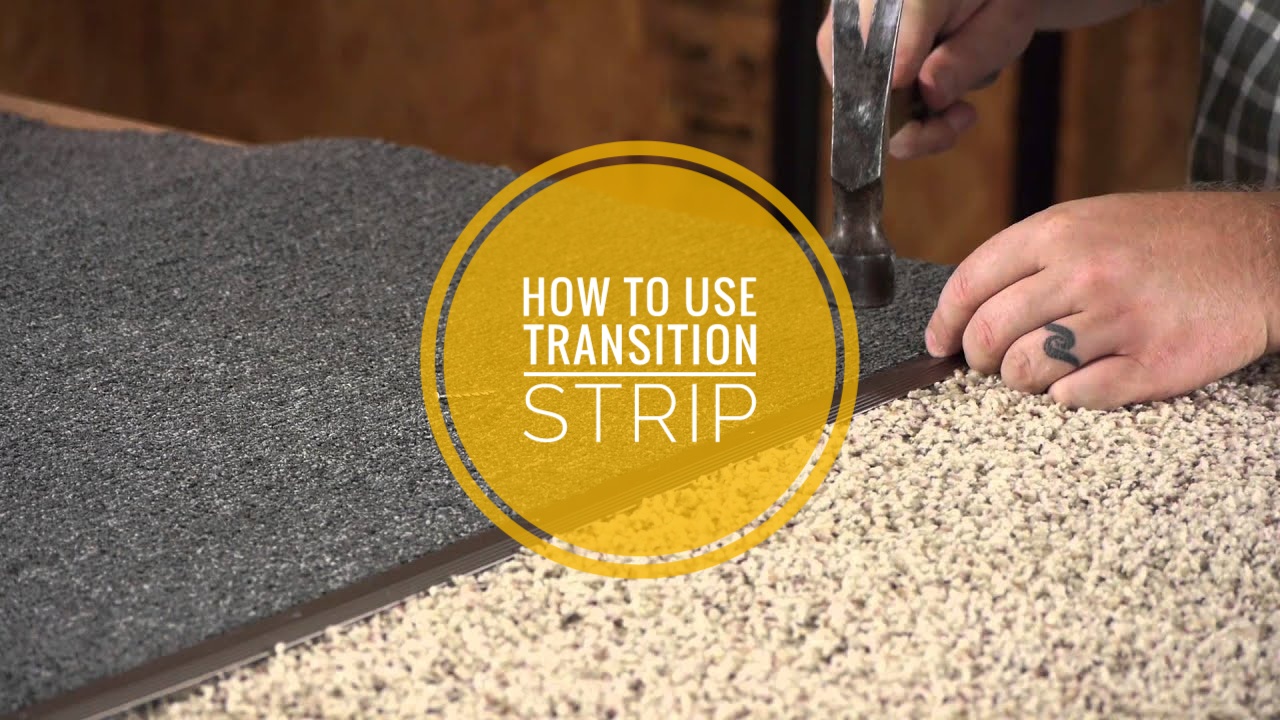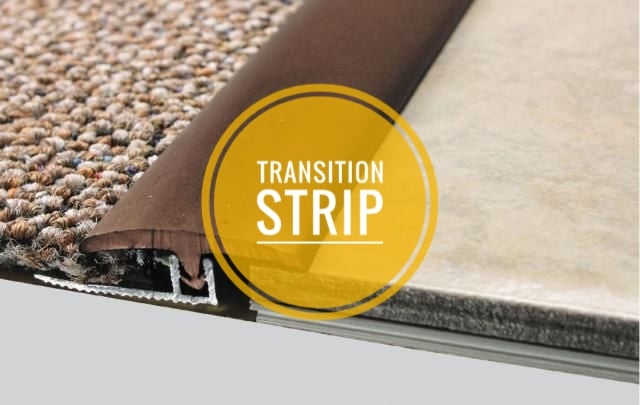NEWS TAG
brand
How To Transition From Carpet To Tile?
How To Transition From Carpet To Tile?
One of the last steps in any installation or renovation project is transitioning from carpet to tile or tile to carpet. It is the final touch to ensure the work that has been done looks elegant and thorough. It is also one of those works that can disrupt the entire project timeline and be quite challenging to get it properly fit. If the tiles are not suitable or ill-fitted, then the whole project can become a failure. Mainly an incorrect tiling can make a space look very uninviting.
Finding the right and the best tile for space can be quite a challenge. It is one of the most challenging errands of the construction and design to select the tile suitable for the area where it is to be installed. The designer also needs to bear in mind the mileage, protection, tallness of the ground surface, and other diverse factors. One also needs to ensure that when one transition from carpet to tile, the edges are smoothed out properly, so there is no danger of potential stumbling by the person who walks into space.
Furthermore, part of this transitioning not only in commercial areas but residential properties too can impact various aspects of the design. As a designer or property owner, you can select from a range of tiles that can include carpet tiles to hardwood or vinyl. As per your wish, the materials can be added to the tiles and customized.
So, if you are planning to transition from carpet to tile, there are few pointers that you need to be aware of. One of them is the transition strips, a transition from carpet to tile, and the transition from carpet to tile.
Let's start tacking one section at a time.

What Is Transition Strip?
One of the essential elements that one needs to use when installing or transitioning from carpet to tile is the transition strip. It helps bridge the gap between two surfaces, and there are quite a few different types of transition strips available in the market.
A transition strip is a thin piece of moulding that helps bridge the different levels of two floors. It also helps with the smooth transitioning from one room to the next without creating a jarring effect or breaking the two spaces' aesthetic appeal. With transition strips, the flow of the space remains uninterrupted.
Moreover, it also covers the gaps if there are any between two different floors. A transit strip helps allow the hardwood floor to contract and expand with humidity and changes in temperature.
As mentioned earlier, there are different types of transition strips available in the market. As a designer or construction worker, you need to select one depending on your requirement. Two of the main criteria that need to be considered are the difference between the floors, hence the strip's height. The other is finding a transition strip that closely resembles the floor you are using it on. This will ensure a clean seam connection between the two spaces, so it is unnoticeable.
Types of Transition Strips
Typically there are five different types of transition strips available in the market. You have to select them as per your requirement and purpose.
1. Carpet to Ceramic Tile Transition Strips: This strip aims to connect the carp's low pile to the ceramic floor. Available in an aluminum strip that ensures no visibility when it's laid down. The spikes of the aluminum strip that are jutted out allow it to grip the carpet and the ceramic tiles while not attaching it. In residential properties, for an impeccable finish, a vinyl strip is used to bridge the flooring.
2. 4-in-1 Transition Strips: This type of strip is often used in areas like archways and doorways where the purpose is to join two floors of similar heights. 4-in-1 strips are interchangeable hence can be used in different flooring types of a property. Typically these strips include Carpet Transition, End Molding, T-Molding, and Hard Surface Reducer.
3. Tile to Laminate Transition Strips: often used in residential flooring where the tile and laminate tend to be put on top of an underlayment. A ceramic tile is higher than a laminate needs to have a smoother finish when transitioning. These strips can be used in the gap created between the two floors after the base track installation. The stirp can easily be placed and snapped into the hole, making a smooth and level transition between the floorings.
4. Wood Floor to Wood Floor Transition Strips: These are also known as seam binders, are generally five inches wide. It helps to connect the wood floors of the same height, and screws are drilled on the floor coverings to ensure that the binders do not get loose. These seam binders give the wooden tiles to contract and expand during weather changes.
5. Carpet Edge Gripper: Used to keep carpets in place; these are made of aluminum. The gripper is attached to the subfloor for installing any wall-to-wall carpet.
Now that we know have an idea of the different types of transition stripes available in the market, no matter when and how you choose to have a transition from carpet to tile, you will find the right strip. Irrespective of the place where you want the change, be it from a room to kitchen tile or room to bathroom floor tile, the versatility offered by the transition strip will make it seamless.

How To Transition From Carpet To Tile?
We are aware that a transition strip is required to modify a flooring from one material to another. Hence, when we want to transition from carpet to tile, we need a transition strip. But how do we do the transition from carpet to tile?
The transition is done in two parts, mainly one, removing the carpet and installing the tile. Each piece comes with its steps.
PART 1: Removing the Carpet.
Before you start the journey, you have to be sure that you want to undertake the process. A correctly done floor will make a massive difference in the appearance and ambience of the room.
Step1: Take a utility knife and start cutting the carpet as straight as possible. Select the place to cut the carpet where the tile will meet the rest of the carpet.
Step 2: When removing the carpet from the baseboard, pull it off with a pry bar. Remove the loose paint if there is any on the baseboard. You have to extremely careful not to damage the wall, and in case if you are planning to reuse the baseboard, do not damage or break it.
Step 3: Pull the carpet off the wall along the tack strip. In case the carpet is large, you can cut them into small pieces or roll them away.
Step 4: The padding needs to be removed next. In case the padding is glued to the subfloor is glued you need to scrape it off. In most cases, it is stapled, which can be pulled off easily.
Step 5: The floor needs to be smooth for installing the tiles. With a pry bar, you should remove the tack strip, hammer any loose nails if there are, and remove the staples with the pliers.
PART 2: Installing the Tile
The following steps will change the way the area will look. The job must be done with precision to ensure the best effect of transitioning from carpet to tile.
Step 1: If the tile is to be placed on the doorway, they a detailed work of cutting the door jamb, measuring the thickness of it before installing it is required. If the tiling is not done on the doorway, this step can be overlooked.
Step 2: The backer board needs to be measured, cut, and installed with screws. Ensure that the backer boards are ¼ inches within the wall. We recommend using a diamond face blade to cut the backer board and screw guns to install screw the backer board.
Step 3: Layout the pattern of the tiles as you want and mark them. Keep repeating the design and leave the space between the tiles for grouting.
Step 4: As per the manufacturer's instruction, mix the mortar of peanut butter consistency.
Step 5: With the notched trowel, spread it in a thin set and then place tile and repeat throughout the area. Let it dry for 24 hours and remove the spacers. The next step is to mix the grout and clean the tiles with a sponge. Allow it to dry for 24 hours.
This is the process, and you can do it yourself or hire a professional to do the job. If you are still thinking if you should transition from carpet to tile, keep reading to know its advantages over the carpet.
Why Should You Transition From Carpet To Tile?
As a homeowner, if you are still facing the difficulty of choosing whether to opt for a tile or carpet or whether you should transition to tiles from carpet, the following reasons can help you to make up your mind on why you should opt for tile:
1. Offers more durability
2. It is easy to maintain
3. Much more low maintenance
4. Water-resistant
5. Eco-friendly
6. Reusable
7. Improves air quality and Reduces exposure to allergens
8. It can be designed and pattered as per your liking with multiple tiles
Conclusion
Irrespective of whether you are expanding your room or just planning to transition one room to the other with different material, that is, carpet to tile, there is a range of options available. As a designer or homeowner, you can easily make carpet meet tile stylishly and elegantly when you have the suitable options, tools, and materials available to you.
So, why wait to reap the benefits of tiles? It's time for you to transition.
